Tesla’s battery swap station was quite the hype back in 2013. CEO Elon Musk made a public statement claiming that the company could fully charge their Tesla vehicles in 90 seconds. However, this doesn’t seem to be the case anymore. The battery swap station is no longer mentioned on Tesla’s website and there have been no updates since it first opened. So what happened? Let’s take a closer look at Tesla’s Battery Swap Station and find out what went wrong.
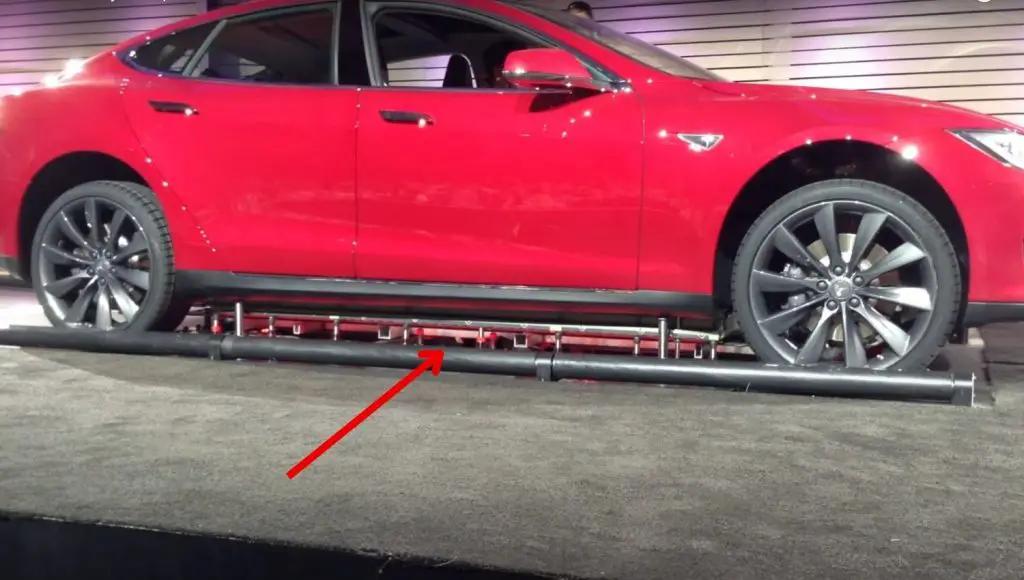
Table of Contents
What is EV battery swapping?
An electric vehicle battery swap is a process through which the batteries in an electric vehicle are replaced by specialized machines that can quickly and efficiently replace each one. Typically, these systems involve robotic arms that reach into the battery compartment to remove and replace individual batteries at a rapid rate. The main advantage of this approach is that it allows EVs to be rapidly refueled while minimizing downtime.
Additionally, by eliminating the need to plug in and wait for charging, swapping can help to decrease range anxiety. However, some potential drawbacks of this technology include higher costs associated with upgrading power supplies and building new stations equipped with swapping facilities.
Despite these challenges, many experts believe that EV battery swapping offers a promising solution for addressing the emerging demand for clean transportation. After all, as more and more people switch from gasoline-powered vehicles to EVs, the quick and efficient refueling made possible by battery swapping could prove an invaluable advantage.
What happened to the Tesla battery swap?
When the station was first unveiled, it was said to be able to replace a Tesla Model S battery in 90 seconds. This was a pretty incredible feat, considering that it usually takes around an hour to charge a Tesla. However, the battery swap station could never live up to the hype.
Tesla battery swap technology
Musk was confident about Tesla’s battery swap technology, and he believed that Tesla could be able to mass-produce cars with this revolutionary charging system within the next two years.
If Tesla could have delivered on this promise, it would have revolutionized how we think about transportation. Imagine being able to drive from coast to coast without ever stopping to charge your car. This could completely change the way we travel, and it would have a significant impact on the environment.
Why did Tesla give up battery swapping?
In 2021, the company abandoned its battery swapping ambitions by putting out the statement: “The company believes electric vehicle charging is the best way to power its vehicles, and that battery swapping is riddled with problems and not suitable for widescale use.”
Also, It wasn’t clear how well it will work in the long term. There are also concerns about the cost of the battery swaps, which could be high if Tesla doesn’t manage to scale up the technology.
Possible reasons behind Tesla dropping battery swapping idea
There are a few reasons why the battery swap station never really took off. First, it was only ever available at a single location in Harris Ranch, California. This made it inconvenient for most Tesla owners, who would have to go out of their way to use the service.
The cost of using the battery swap station was actually more expensive than charging via a supercharger. This made it unappealing for most Tesla owners, who were already paying a premium for their electric vehicles. Battery swapping also presented some technical challenges for Tesla.
For instance, the battery packs would have to be standardized to fit all of Tesla’s vehicles, which could limit the flexibility of the battery design. Additionally, battery swapping would require significant changes to the car’s design, making it more complex and expensive.
Also, as battery technology has improved, the need for quick battery swaps has diminished. As a result, Tesla’s battery-swapping stations are now nothing more than a curiosity.
Final Verdict
All in all, the battery swap station was an interesting idea but it was inconvenient to use and was more expensive. This is probably why Tesla has quietly discontinued the service and is no longer mentioned on their website.
The company has currently pivoted its focus towards producing 4680 battery cells for Model Y. Tesla is not currently investing in the technology required for battery swaps. This may be disappointing for those who were looking forward to a quick recharge, but it does not mean that Tesla’s electric vehicles are any less appealing. The company continues to make strides in innovation and their cars remain at the forefront of sustainable transportation.
Do you think the battery swap station was a good idea? Let us know in the comments!

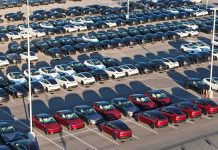
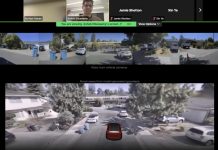
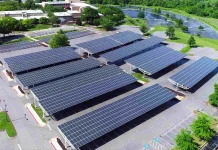
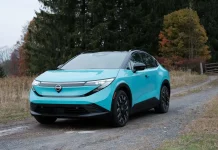
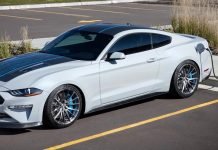








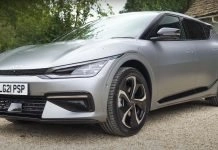
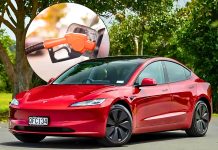
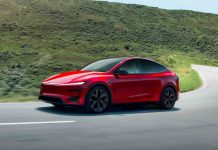
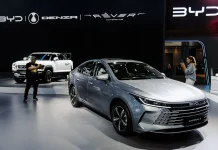
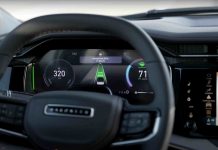
Ain’t dis foo tired of embarrassin’ hissef?
Aren’t you? I suspect you haven’t accomplished nearly what Musk has! Love him or hate him, you can’t deny that he is striving to do great things for the human race!
lol. He may or may not have achieved ‘great things’, but whatever he was striving for, it was not for the human race. Rather, it’s for the benefit of his bank account.
When universal battery/packaging is a reality, swapping can happen. Just like USB-C, they’ll come to standardization soon via coercion or vision – did take a while though.
A question you should be asking yourself every day.
Why would I want to swap my carefully-maintained EV battery for one of completely unknown history? No, thank you very much.
If you never owned the battery in the first place would you care.
The battery is the most expensive component of the car – lasting longer than the car with a likely resale value better than the rusted rest of the car ( as it will have a value for other uses such as storing wind or solar power even when only 50% efficient).
But that value depends on how carefully it had been treated. That means you won’t want to swop it for another battery of unknown heritage.
Really? Their warranted 10 years with a present price of 5K which should be 10K in ten years. 5k or 10K are you going to buy a 10 year old EV with the original battery? You need your head examined if you would. So that market will take a dive.
Perhaps $20K to “fill up” wasn’t considered affordable..
Learn your history, guys: CARB drove the push to swap stations by requiring “Fast Fueling”, which blew CARB’s technical requirement of 300 miles in 90% of EV miles come from the plug in your driveway while you sleep, this would grossly disadvantage EVs in general, and make the roll-out of a new set of infrastructure (to compete with Tesla’s then new but rapidly expanding SuperCharger network) highly uneconomic. CARB was hell-bent on driving H2 forward, and still hasn’t quite figured out that the race is lost.
One word… NIO. Swaps + Charging work. Swap stations can be used as energy storage to load balance the grid as well.
Nio works because they are going for a different audience. Long distance travelers did not like the idea of having to go back and reswap to get their original battery back. On the other hand, urban drivers with no way to home charge are Nio’s target market.
It works for now until EV range goes to 600 in the near future. Then it will look stupid.
Betterplace 2.0 Well its a good ideer to start the change to ev. Central charging, no fuss. But pepole dont get it. And now we are getting to the tipping point infastructior wice that it makes no sence at all. And pepole still dont get it. Så to summon up Pepole dont get it.
I own a Tesla and the superchargers are really fast. After 3 hours of driving I hit the restroom and a snack and a stretch my car is charged in 30 minutes. No need for a battery swap.
We would need at least twice the supply of batteries, always having the swapped batteries in reserve while being charged for the next swap.
We don’t have the raw materials to do that, given high demand.
Regardless of whether people are signed up for swapping, if they can access power while sleeping they will charge at night because it takes no time. So no more than 10 or 20% of cars will be swapping on any day. They won’t all be arriving at the swap stations at the same time so only at most 3 or 4% of the cars will be swapping batteries before those batteries can be recharged and swapped out again. Probably more like 1 or 2%. So the swapping stations only need to carry 3% as many batteries as are in service considering that not all batteries will be in the right place at the right time.
But, as the swapping services mature they may well start to give drivers a choice as to the size battery that they want to use. Different size batteries would work better for different owners. Many might only need a 60kWh battery for say a 260 mile range while others might want a 100 kWh battery with a 400 mile range. Smaller, lighter batteries would be more efficient and cheaper to lease.
Using smaller batteries would make cars cheaper to own and allow many more cars to be built with the same number of battery cells and with swapping people could still have adequate range for long trips. Those driving RVs and pulling trailers would find battery swapping to be a major advantage. Trucks and RVs will need much larger and more expensive batteries but they might need them only rarely.
Battery electric cars make sense for short hall trips and commuting. The long charge times and short range won’t work for anyone going on a long road trip. Think skiing, dropping your kids off at college or going to thanksgiving to grandmas. We don’t have the time or infrastructure to charge. They won’t work for people who live in apartments.
Everyone I know that has a battery electric vehicle also has an internal combustion engine gas vehicle for longer trips.
Fuel cell electric vehicles which are hydrogen powered would solve these problems. The hydrogen can be totally green can be generated with green electricity.
Climate change is a real problem and needs better solutions than battery electric vehicles.
We own only a Tesla – a Model 3 LR – and have taken numerous long trips in it. Our average recharge time when traveling is 19 minutes, which gives us around 2 hours of drive time to the next Supercharger. It’s actually extremely practical, and costs 75% less than gasoline. I suggest you give it a try – or perhaps expand your circle of EV-driving friends!
Wow, glad you gotbthat much $$$, because ypu paid between $50k -$55k for your Tesla, when you could buy a Toyota Corolla for $28k. So how long to recoup that additional $27k? By topping your Tesla up every 2 hours i.e. around 130 miles, a Corolla get around 35-38 mpg, lets just say it would need 4 gal for same trip. At $5/gal (I know, thats low, but principle is same), the cost would be $20, you save 75%, so you save $15. If gas doesnt go up and electricity doesnt go up, or either doesnt go down, you only need to drive 223,000 miles to recoup ypur additional cost, minus the cost of the extra tires your Tesla will need due to the higher weight. Yeah, good luck with that.
Wow you are stupid. Let’s not forget your 100 dollar oil changes maintenance from stealerships break downs, ” forgetting” to get the car looked at etc…. If you actually broke it down you save way more than an ice vehicle.
I guess you also pass moral judgment on people who buy BMWs instead of Corollas? How long until they “recoup” that investment, I wonder?
Well, it happen the same thing like semy truck, sport car, boring company, solar panels. One big nothing.
What happens with older Teslas as their battery degrades over time? Battery swaps would be ideal for that.,say once every few years or after degrading to some percentage.
With an expectation of over 300k miles for the normal user, the vast majority of which never fast charge, the battery will outlast the car. Having everyone pay for the additional complexity up front of making the battery swappable makes no sense, especially for the normal owner who may visit a charger once just for the novelty of it but otherwise spends no more time charging than the time to connect it at night and disconnect it in the morning.
Read about this idea 20 years ago in the Netherlands in Autoweek
Well I read a lot of things about tesla
but my story must be so different from others, when my wife wanted a tesla the first thing I said we can’t afford it, she wanted a s model and like her if I’m going to get something I want the best but between both of us we only made about $80,000.a year so we started looking at s models and we could get a D65 with all the bells and wishes out the door for $81,000. so we had a 425 hp dodge magnum that was 4 years old in perfect condition and I also had a kaboda tractor so I sold both of them for $28,000. So that left me owning $53,000. So we bought it the good news was it came with lifetime free charging plus the D65 was one that you could upgrade to a D75 but to do this it would cost us around $10,000 so we just keep the D65 so my wife and I just love you tesla but the good news is that 3 years later they offered to upgrade the D65 to a D75 for $2000. so we got it done and now it went from 225 miles with a full charge to 250 miles with a full charge
We have had our tesla since 2016 and we have had no trouble with our tesla that we love ❤️
Have you been asleep for 9 years?
NIO a Chinese premium EV company has already completed 10 million battery swaps. This will go global and will be a great alternative to only fast charging. There are many pro’s to swapping not just how fast it is to replenishing the battery. All NIO cars can be super charged or swapped. Tesla is a great company but just because they didn’t continue with it doesn’t mean another company can’t make it global. NIO swap stations will be in 25 countries by 2025, currently entering Germany Sweden and Hungary. Swapping is an excellent alternative in this fast paced EV revolution.
My biggest concern is battery degradation causing me to either shell out half the cost of a new car for a replacement. Battery warranties are only 8 years, and I every car I owned was at least that age by the time I get my hands on it, so I want a car that will last much longer than that. Battery swapping is a good solution for that, the cost of labor is low, and the quality of the batteries offered could be curated by the station. Nio is already doing it, and gogoro is taking over Taiwan and the rest of Asia on the E-scooter level. This is a model that can work.
Not much content in this article. Basically describes two reasons. There are more issues described in the comments than are in this article.
Battery swaps have failed wherever tried. Expensive and won’t scale up without ever more expense. Limits innovation in battery designs both mechanical and electrical.
…
Maybe they discontinued it because they will have to replace old/dead batteries with new one and that could be extremely costly.
If a car is Designed for battery swapping- when the batteries are on their last legs the battery can be replaced within a reasonable cost.
As far as Battery Electric Vehicles being some sort of Holy Grail of reduced Energy usage?…..the general costs of production are already much refined by use of Design and Robotic manufacturing processes.
The Difference is in Use.
No Engine oil changes. No Transmission fluid changes. No replacement of Filters for both of those Maintenances. Reduced Brake wear through Electrical Generation Recapture to slow the car- before finishing off the stopping through hydraulic brakes.
Huge tire longevity through the development of reduced rolling friction Tires.
Reduction of Noise pollution due to an Electric Car’s Quieter operation.
And the Cherry on top of this Ice Cream Cake?
No Stinking Exhaust- or Smog!
The health benefits alone of reduction of accrued Lung Issues which Manifest later on in our lives by making Air a bit safer to breathe again cannot be appreciated More.
Is there No carbon Footprint?- No!
But- it is much Reduced, and Power Companies who had Generating Plants on Active standby in the grid will now make bak some of their losses as we Charge our Cars as we Sleep.
What remains is the continuation of developing an Electrical charging Grid for the Public to Access- conveniently.
Still- Today- we are at a Place in charging Electric Cars in much the same way as the Predicament faced by people who bought ‘horse-less Carriages’. We still scramble to find public access stations. Model T owners scrambled to find Blacksmith’s?shops which had Gasolene pumps.
In that- we are Re-living History ( if not Repeating it.).
That really Does Need Addressing.
I love it completely change the way we travel. No actually keep travel exactly the crap way it is now. Block roads individual transport it’s crap. The ev is not the solution it’s a dead end we can never build enough roads for the number of cars there may be one day